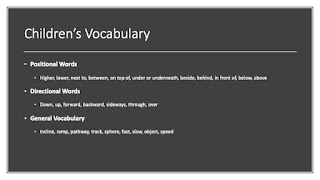
From observing and leading natural loose parts play, facilitating workshops on math and loose parts in nature, and using mathematical tools outside, I have gathered a few key concepts for exploring math outside.
· The world is alive with mathematical learning opportunities. Nature is full of patterns, cycles, shapes, and numeric opportunities. Take a walk outside with a mathematical lens to discover possibilities. Observe how children naturally experiment with mathematical concepts as part of outdoor play. Nature Notes, an observation sheet from Dimensions Education/Nature Explore, helps me and other educators notice counting (as children gathered 1, 2, 3, 4 sticks), matching of elements (leaves that were the same), application of geometric shapes (creating rectangles for a house), sequencing (working through the order of the tasks they planned out), symmetry, and understanding perimeter. Nature provides many non-standard examples to deal with complexities.


· Nature can provide!While I love loads of manufactured loose parts, nature often has plenty of sticks, rocks, seeds, and pinecones. If not, they can be gathered locally for free. As children collect their own natural treasures, student choice and voice becomes prominent in their play and learning as they create squares, patterns, and solve challenges.
· Bring the tools outside. We often hide away our math tools and manipulatives in closets, only using them when teaching a specific concept. Let’s take them outside so tools can be another “variable” in students’ play.
o Make grab and go kits. Having “starts” for the week in small backpacks make it easy to get math options outside as part of play.
o Create a math cart. Curate a larger collection of basic math supplies in an outdoor cart to make easy to transport to nearby nature areas.

o Use digital tools to support play. Depending on the technology you use and have available, digital devices have cameras to document and record information, timers, stop watches, tally apps, and other basic math tools.
o Consider mathematical tools to extend play.
§ Number and Operations—arrays, number lines, dominoes, yard dice, calendar numbers, sticks, milk or applesauce lids, ten frame, dice, fabric 100s chart
· Arrays may include egg cartons, ice cube trays, muffin tins, tic tac toe or checker boards, sorting trays, and other sets organized in rows and columns.

§ Geometry and Spatial Sensing—frames, 2D and 3D shapes (both found and from a set), attribute blocks, mirrors
§ Measurement—rulers, yardsticks, ribbons, yarn, rope, measuring tapes, sand timers, digital timers, scales, trundle wheel, balances, sticks and ropes in standards sizes (feet, two feet, yard, six feet for COVID)
§ Patterns and Algebraic Reasoning—pattern blocks, game pieces
§ Displaying and Analyzing Data—garden lattice, tally sheets
§ General Items—chalk, wooden planks, milk crates, light colored fabric squares, recyclables, sticks, rocks, acorns, sweet gum balls, driftwood, pine needles, mark making tools and paper
· Solve real life problems.Nicholson, the landscape architect who coined the term “loose parts,” explained in his theory that loose parts and learning should help solve real life problems pertinent to the students. The 4 questions of data analysis are a perfect way to support inquiry and emergent learning. As student start wondering about something, we can support and guide them through this process.
o What do you want to know?
o How can you find out?
o What tools will help you collect the data?
o How will you use the information? (from Messy Maths)

As educators, we can help support and extend mathematical learning in our emergent curriculum as we follow students’ questions, use mathematical vocabulary, observe and anticipate mathematical supply needs, assess learning, and allow children plenty of nature play. In our research, my colleagues and I found the role of facilitator in loose parts to be:
Loose parts are open-ended, interactive, natural and manufactured materials that can be manipulated with limitless possibilities. Interaction with loose parts includes experimentation, exploration, and playful interactions with variables through creativity and imagination. Participations have the freedom to explore variables, combine materials, and react to complex themes and ideas that emerge. Facilitators encourage participants make loose parts available, stimulate discovery, provide opportunities, allow for open-ended play, and prompt meaningful connections and experiences. Through loose parts exploration participants develop imagination, creativity, and collaborative skills. Process is more important than the end product fostering overall growth and development. (Gull et al., 2019, p. 51)
You’re ready to see and support natural mathematics exploration in play!
Resources to Help
Math Resources and Tools on Amazon (including book suggestions!)
Mirrors for Mirror Books

Resources from Juliet Robertson:
Suggested materials for maths outdoor—good list of basics to consider
Messy Maths Handout--Great content!
Sammy the Metre Snake—consider a yard snake in the US
Books from Juliet Robertson:
Messy Maths—great book that goes through all mathematical domains
Dirty Teaching—general information about learning outdoors
---
General suggestions for outdoor maths from NAEYC—good suggestions to consider!
Math Vocabulary—terms to consider to use
Kindergarten math vocabulary with definitions
Nature Notes-- Documentation Option, p. 62-63
Conference Presentation on Early Maths—inside focused--vocabulary, activities, potential sequencing lists, etc.
Big and Small Outdoor Action Card Prompts—action prompts to explore big and small
Gull, C., Bogunovich, J., Goldstein, S. L., & Rosengarten, T. (2019). Definitions of Loose Parts in Early Childhood Outdoor Classrooms: A Scoping Review. International Journal of Early Childhood Environmental Education, 6(3), 37-52.https://naturalstart.org/sites/default/files/journal/6._gull_et_al._formatted_draft_v2.pdf














































